Physical Address
304 North Cardinal St.
Dorchester Center, MA 02124
Indications for this procedure include:
Complex (or irreducible) metacarpophalangeal (MCP) joint dislocation.
Concomitant fractures that require open reduction internal fixation.
The index finger is the most common site of this injury.
Most dislocations are dorsal and occur during forced hypertension of the MCP joint.
The involved joint will be painful and swollen; range of motion (ROM) will be decreased ( Fig. 15.1A–C ).
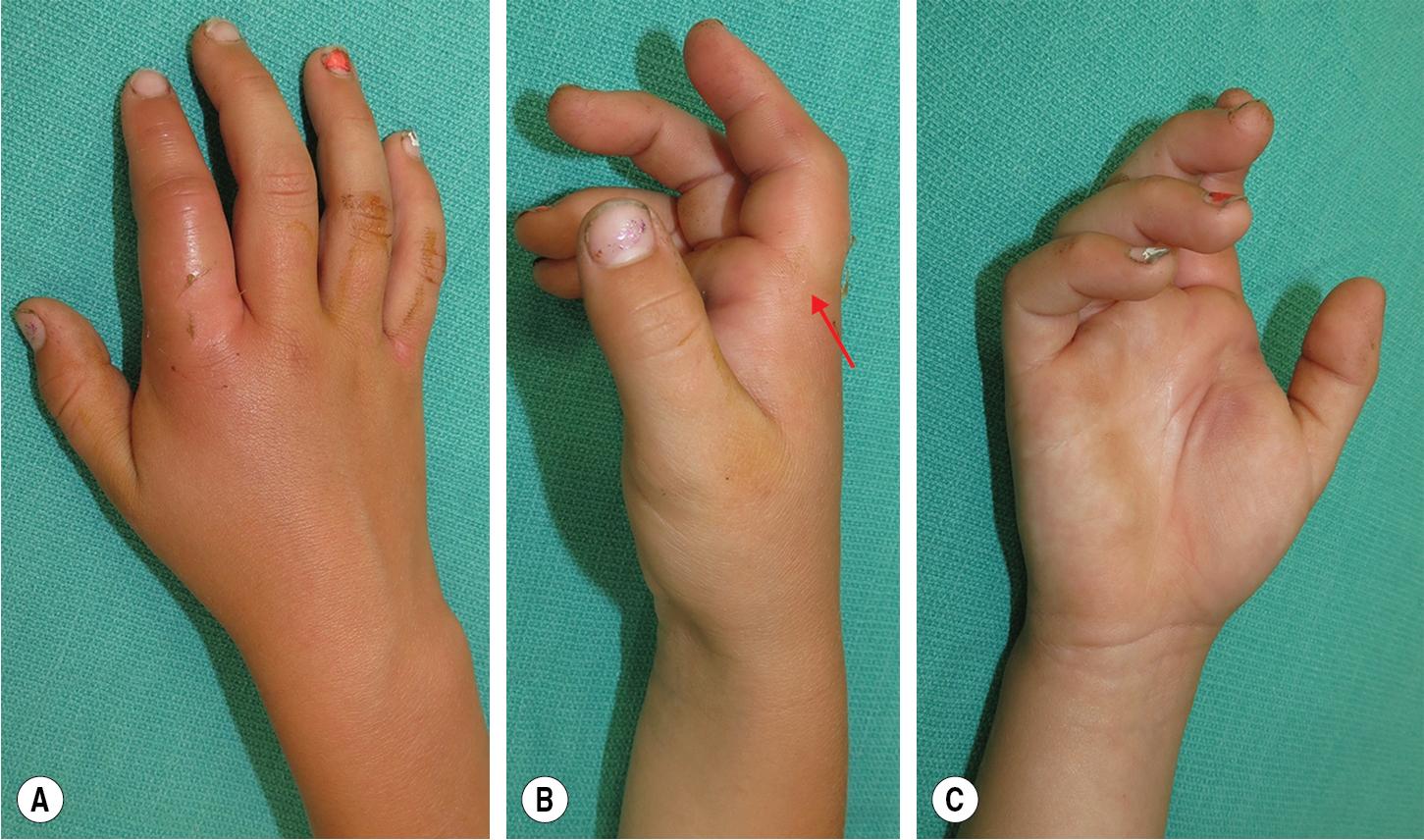
There may be sensory changes because of traction on the neurovascular bundle.
Simple dislocations typically have a hyperextended appearance, with the proximal phalanx base and metacarpal head remaining in close contact ( Fig. 15.2A ).
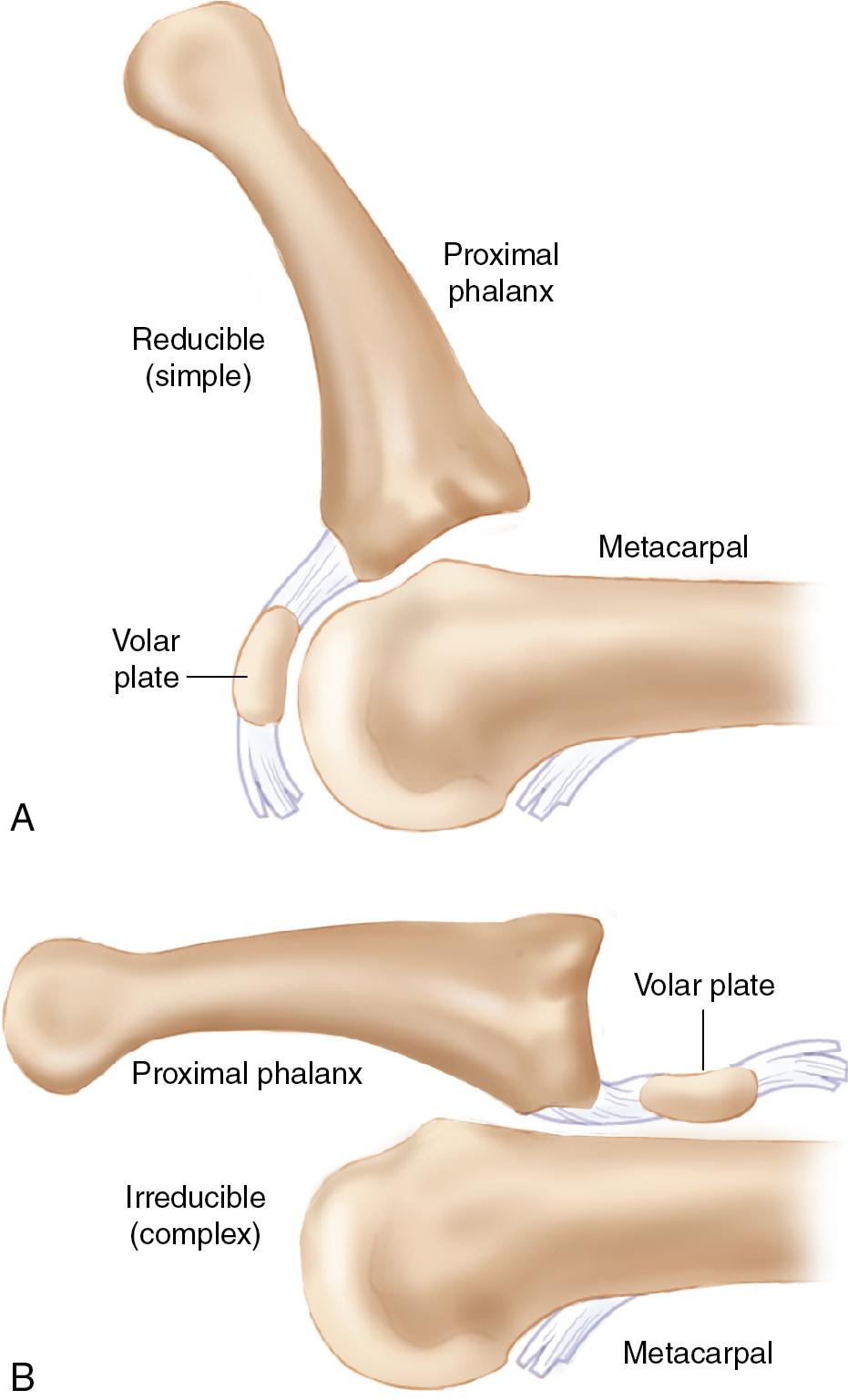
Complex dislocations often appear less displaced than simple dislocations.
Complex dislocations usually have more separation between the joint surfaces, and the proximal phalanx base may be displaced dorsal and proximal to the metacarpal head (“bayonet” deformity; see Fig. 15.2B ). In these cases, the finger does not appear grossly hyperextended (see Fig. 15.1 ) but may be shortened, with an easily identifiable bump in the palm corresponding to the metacarpal head ( Fig. 15.3 ).
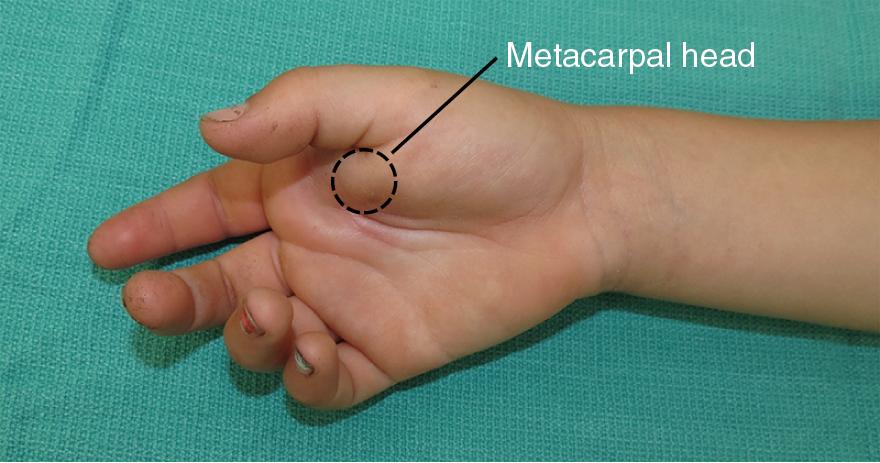
Plain radiographs of the hand should be obtained in three views ( Fig. 15.4A–C ).
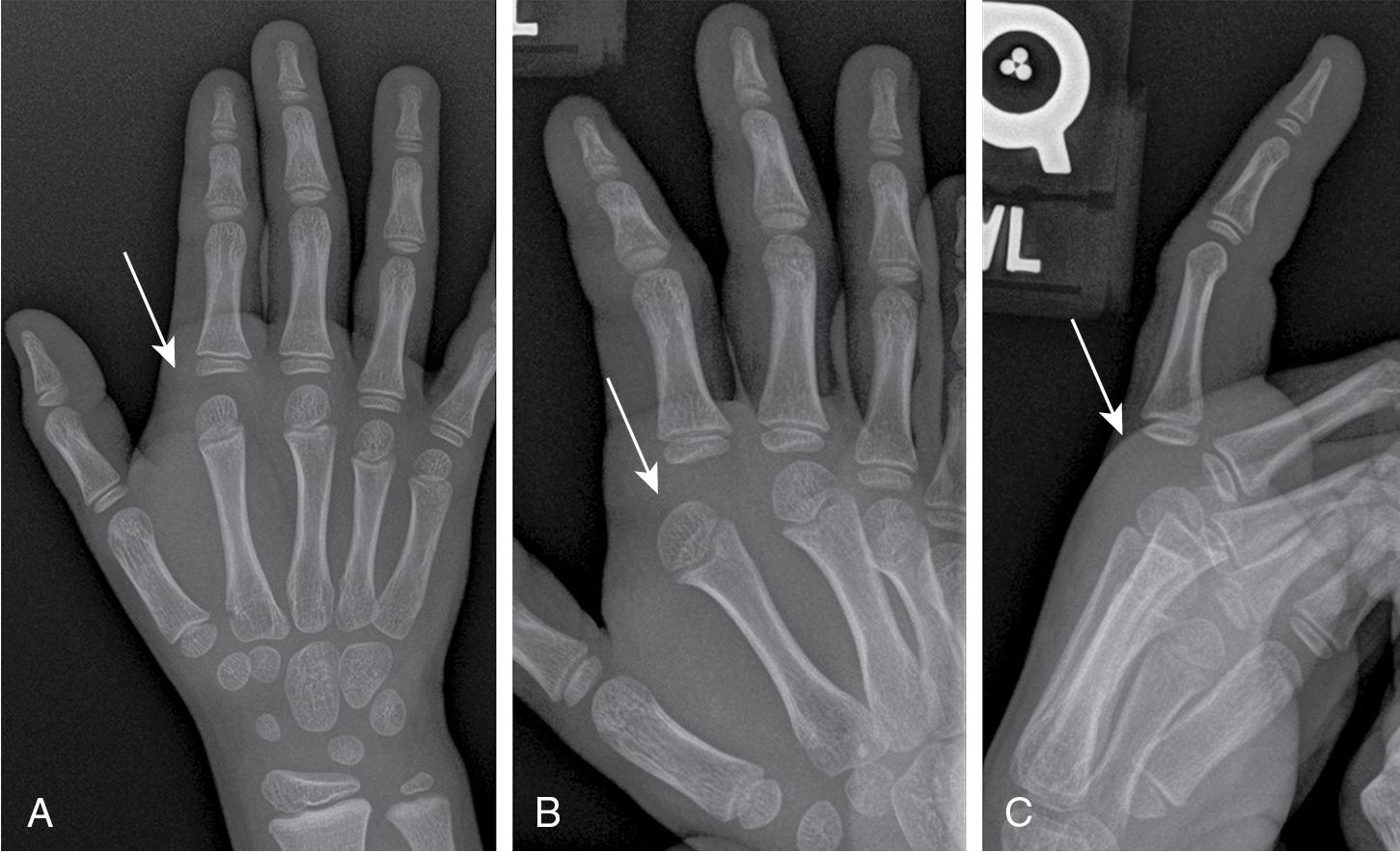
The affected joint may appear hyperextended or it may be in a so-called “bayonet” position; the joint space will be widened if there is soft tissue interposed in the joint.
Identify the position of the sesamoids, if present. If they are within the joint, it shows that the volar plate is entrapped in the intraarticular space.
Additional views, such as a reverse oblique or Brewerton view, may be useful for detecting additional details, including subtle fractures of the metacarpal head.
With dorsal dislocations, the volar plate remains attached to the proximal phalanx.
Volar plate remains draped over the metacarpal head (not interposed in the joint space; see Fig. 15.2A ).
Excessive hyperextension or traction during reduction may draw the volar plate into the joint and convert the injury into a complex, irreducible dislocation.
Proper reduction includes flexing the wrist (relaxes the flexors) and applying pressure to the dorsal base of the proximal phalanx in distal and volar directions. This will slide the proximal phalanx over the metacarpal head.
The volar plate is either transposed between the joint surfaces or trapped dorsal to the metacarpal head (see Fig. 15.2B ).
The metacarpal head becomes locked volarly as it “button-holes” between ligamentous and tendinous structures.
In the case of index finger dislocation, the metacarpal head is typically pinched between the lumbrical radially and the flexor tendons ulnarly ( Fig. 15.5A ). With small finger MCP dislocations, the head is trapped between the flexor tendons radially and the abductor digiti minimi tendon ulnarly (see Fig. 15.5B ).
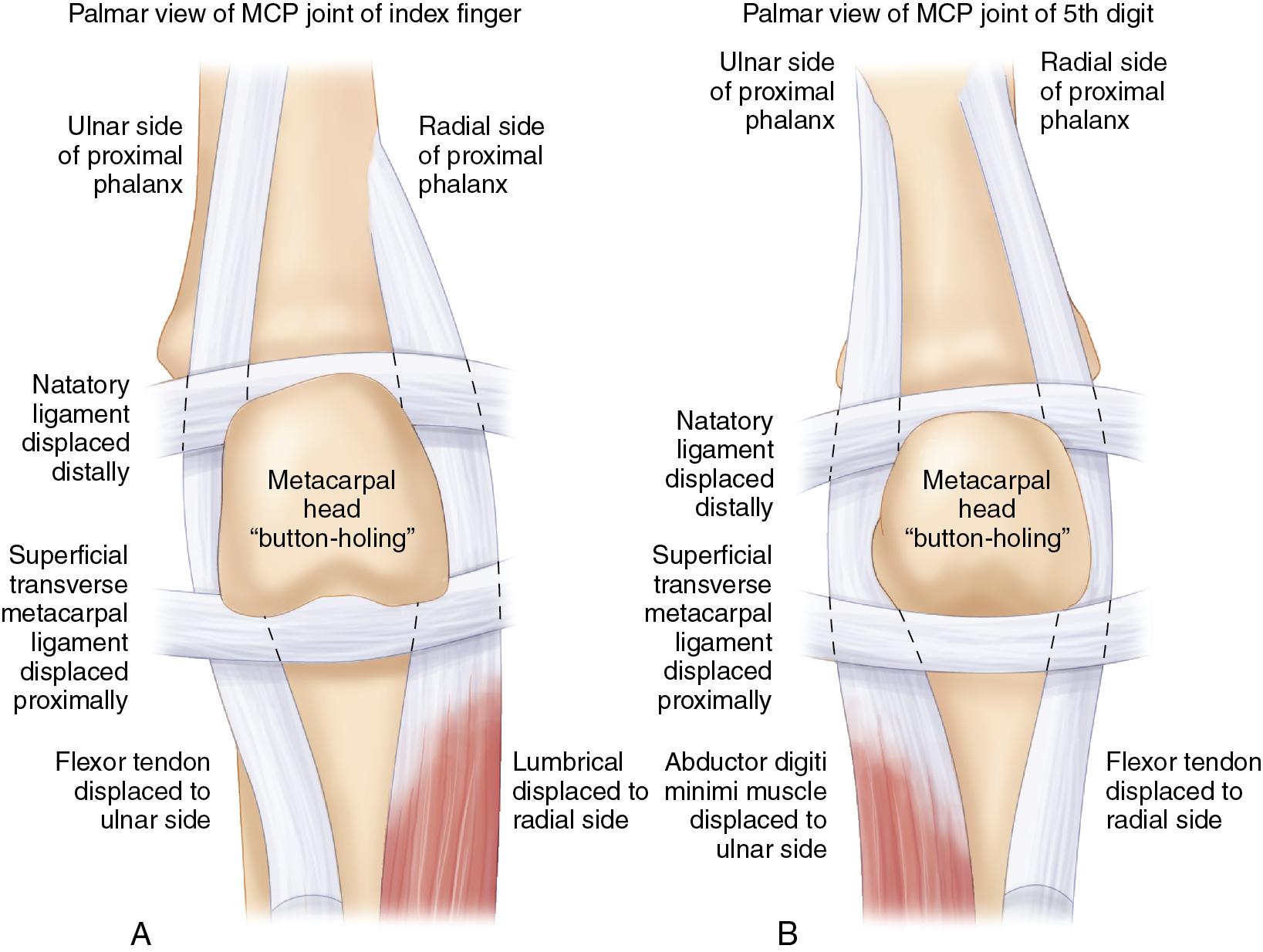
In both cases, there is additional entrapment of the head between the displaced natatory ligament and the superficial transverse metacarpal ligament.
Together, these structures act as a “noose” around the neck of the metacarpal, preventing closed reduction.
Become a Clinical Tree membership for Full access and enjoy Unlimited articles
If you are a member. Log in here